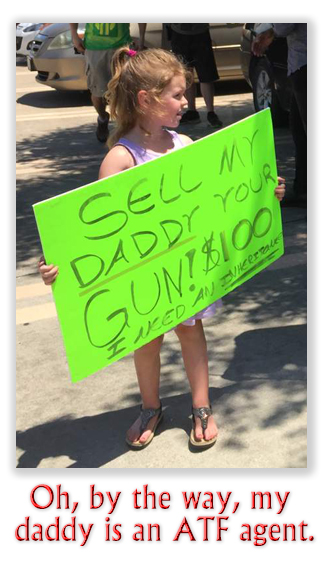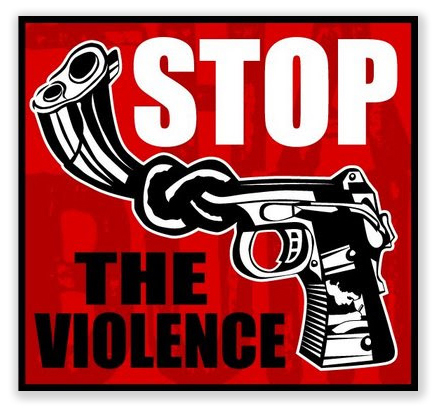We post news and comment on federal criminal justice issues, focused primarily on trial and post-conviction matters, legislative initiatives, and sentencing issues.
Today marks our 1700th post since our beginning in 2015.
RANGE REDUX
A little more than two years ago, a 3d Circuit panel of three appellate judges held that arch-criminal Bryan Range – a man whose rap sheet included traffic tickets, fishing without a license and a misdemeanor false statement 25 years ago to get food stamps for his hungry family – had no 2nd Amendment right to own a hunting rifle or buy a shotgun.
 Cooler heads prevailed. Granting en banc review, the Circuit issued a seminal decision, holding that a prior nonviolent offense qualifyingi under 18 USC § 922(g)(1) to prohibit someone from having a gun violated the 2nd Amendment.
Cooler heads prevailed. Granting en banc review, the Circuit issued a seminal decision, holding that a prior nonviolent offense qualifyingi under 18 USC § 922(g)(1) to prohibit someone from having a gun violated the 2nd Amendment.
The government sought Supreme Court review, but while the petition was pending, the Supremes handed down United States v Rahimi, a case that held that the temporary disarming of someone under a court-issued domestic protection order could be disarmed without offending the 2nd Amendment. SCOTUS remanded all of the 2nd Amendment challenges on its docket – including the Range decision – for reconsideration in light of Rahimi.
Since then, the 8th Circuit decided that Edell Jackson, a convicted drug dealer, could be disarmed under 18 USC § 922(g)(1) consistent with the 2nd Amendment. The 6th Circuit held in United States v. Williams that a felon with violent offenses in his past was properly subject to 922(g)(1) consistent with the 2nd Amendment (leaving open the question of § 922(g)(1)’s effect on people with nonviolent felonies), and – just last week – the 4th Circuit said that anyone with a felony conviction was outside the protection of the 2nd Amendment.
Now, the en banc 3rd Circuit has delivered for Bryan like Santa on Christmas Eve, holding last Monday that Bryan Range’s right to own a gun remains protected by the 2nd Amendment despite his quarter-century-old fraud offense.
Applying New York State Rifle & Pistol Association v. Bruen and Rahimi, the en banc Circuit “reject[ed] the Government’s contention that ‘felons are not among “the people” protected by the 2nd Amendment’ [and] that Bryan Range remains among ‘the people’ despite his 1995 false statement conviction. The 3d then rules that
[h]aving determined that Range is one of “the people,” we turn to the easy question: whether § 922(g)(1) regulates 2nd Amendment conduct. It does.
Against this backdrop, it’s important to remember that Range’s crime—making a false statement on an application for food stamps—did not involve a firearm, so there was no criminal instrument to forfeit. And even if there were, government confiscation of the instruments of crime (or a convicted criminal’s entire estate) differs from a status-based lifetime ban on firearm possession. The Government has not cited a single statute or case that precludes a convict who has served his sentence from purchasing the same type of object that he used to commit a crime. Nor has the Government cited forfeiture cases in which the convict was prevented from regaining his possessions, including firearms (unless forfeiture preceded execution). That’s true whether the object forfeited to the government was a firearm used to hunt out of season, a car used to transport cocaine, or a mobile home used as a methamphetamine lab. And of those three, only firearms are mentioned in the Bill of Rights.
For the reasons stated, we hold that the Government has not shown that the principles underlying the Nation’s historical tradition of firearms regulation support depriving Range of his 2nd Amendment right to possess a firearm.
 The Circuit noted that its decision “is a narrow one. Bryan Range challenged the constitutionality of 18 USC § 922(g)(1) only as applied to him given his violation of 62 Pa. Stat. Ann. § 481(a).” This suggests that those with prior convictions might have to apply piecemeal for confirmation that their 2nd Amendment rights remain intact.
The Circuit noted that its decision “is a narrow one. Bryan Range challenged the constitutionality of 18 USC § 922(g)(1) only as applied to him given his violation of 62 Pa. Stat. Ann. § 481(a).” This suggests that those with prior convictions might have to apply piecemeal for confirmation that their 2nd Amendment rights remain intact.
The 6th Circuit has implied the same, complaining that the defendant – who was arguing in appeal of a § 922(g)(1) conviction that application of the felon-in-possession statute violated the 2nd Amendment – never sought to have his 2nd Amendment rights confirmed until he was caught with a gun.
For now, Range II is a breath of fresh air. The Circuit held resoundingly that Bryan “remains one of ‘the people’ protected by the 2nd Amendment, and his eligibility to lawfully purchase a rifle and a shotgun is protected by his right to keep and bear arms. More than two decades after he was convicted of food-stamp fraud and completed his sentence, he sought protection from prosecution under § 922(g)(1) for any future possession of a firearm. The record contains no evidence that Range poses a physical danger to others. Because the Government has not shown that our Republic has a longstanding history and tradition of depriving people like Range of their firearms, § 922(g)(1) cannot constitutionally strip him of his 2nd Amendment rights.”
Range creates a clear and well-defined circuit split on the constitutionality of 18 USC § 922(g)(1). This is probably not the end of the inquiry, although perhaps the Trump Dept of Justice may not share the current administration’s ardor for seeking certiorari on every 922(g)(1) case to come down the pike.
 Ohio State University law professor Doug Berman, writing in his Sentencing Law and Policy blog, noted that Bryan’s “case seems particularly sympathetic, as he was convicted nearly three decades ago of only a relatively minor crime. Because this Range ruling creates a clear circuit split on the constitutionality of 18 USC § 922(g)(1) in some settings, I would expect to see an appeal to the Supreme Court by the US Department of Justice. But maybe the new incoming Justice Department officials might not want to test the application and reach of the 2nd Amendment in this particular ‘narrow’ case.”
Ohio State University law professor Doug Berman, writing in his Sentencing Law and Policy blog, noted that Bryan’s “case seems particularly sympathetic, as he was convicted nearly three decades ago of only a relatively minor crime. Because this Range ruling creates a clear circuit split on the constitutionality of 18 USC § 922(g)(1) in some settings, I would expect to see an appeal to the Supreme Court by the US Department of Justice. But maybe the new incoming Justice Department officials might not want to test the application and reach of the 2nd Amendment in this particular ‘narrow’ case.”
Range v. AG United States, Case No. 21-2835 (3d Cir. Dec. 23, 2024) 2024 U.S. App. LEXIS 32560, at *1
Sentencing Law and Policy, En banc Third Circuit again finds federal felon-in-possesion ban unconstitutional as applied to Byran Range (December 23, 2024)
– Thomas L. Root







